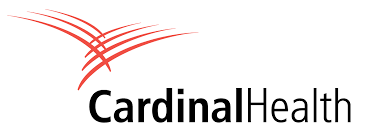
How Drug Cost Control Software Improves Overall Financial Sustainability of Health Care Organizations

Mike Brown, vice president of managed services at Cardinal Health, shares how drug cost control software has improved monitoring efficiency and reduced drug spending.
Drug cost control software has a direct impact on a health care organization's overall financial sustainability and has allowed physicians to efficiently work around formularies and implement new therapies, says Mike Brown, vice president of managed services at Cardinal Health.
Transcript
How does the drug cost control software contribute to the overall financial sustainability of health care organizations, and what benefits does it offer to providers and/or patients?
Drug cost control software and technology, what it does is it compiles all the data that a clinician would have to do manually. It presents it to them in such a way that it identifies, what I would say is the most beneficial opportunities for clinical programs. So that way, they can have a very targeted approach to going after those clinical programs. And it does it a couple of ways.
It really looks at the efficacy of the medications they're using in their facility and what would be best for their patients and their patient types. It also reviews the safety profiles of those medications, ensuring that we're delivering a quality product using the right medications for the patients. And the last piece of it, it will tell them which is the most cost-effective therapy that they implement in their facility. So, when you put all 3 of those things together, it really promotes better patient care, but at the same time, it has a financial aspect that really helps the hospital with controlling costs, especially around medication usage.
I think the biggest thing that this system offers to the clinician is time to implementation. Instead of pulling it all together and spending time, it just gives you the opportunity and puts it out there for you. So, you can implement a program much quicker than you would traditionally without that automation or without that technology.
The other one is, this is a monitoring system. Once you implement something, the system itself monitors what you've done so you don't have to continue to watch it. The system will tell you if you backslide on it, so you can go address it really quick and get it back to where it should be. It definitely allows you to go to different things—Once I implement this, what's next?—and know that the system is monitoring it, making it, or keeping it in place, so it's a sustainable model.
Keeping it sustainable and going after extra things has a direct impact on the financials of medications you're using. We've proven that over time. We're seeing at least a 5% reduction in your drug spending because you've implemented this technology and your clinicians are using it in the appropriate way. And when I say 5% annually, it's not just a one-time savings. This is year over year we're seeing these types of savings, because there's a program that is constantly changing, because everything's changing in the facilities with new drugs, etc, but it's also sustaining what you've already achieved, which builds on it over time.
So, the technology has been enormously efficient for the clinicians in order for them to do what they do best, and that's working with the physicians around the formulary and therapies.
Newsletter
Stay ahead of policy, cost, and value—subscribe to AJMC for expert insights at the intersection of clinical care and health economics.







































